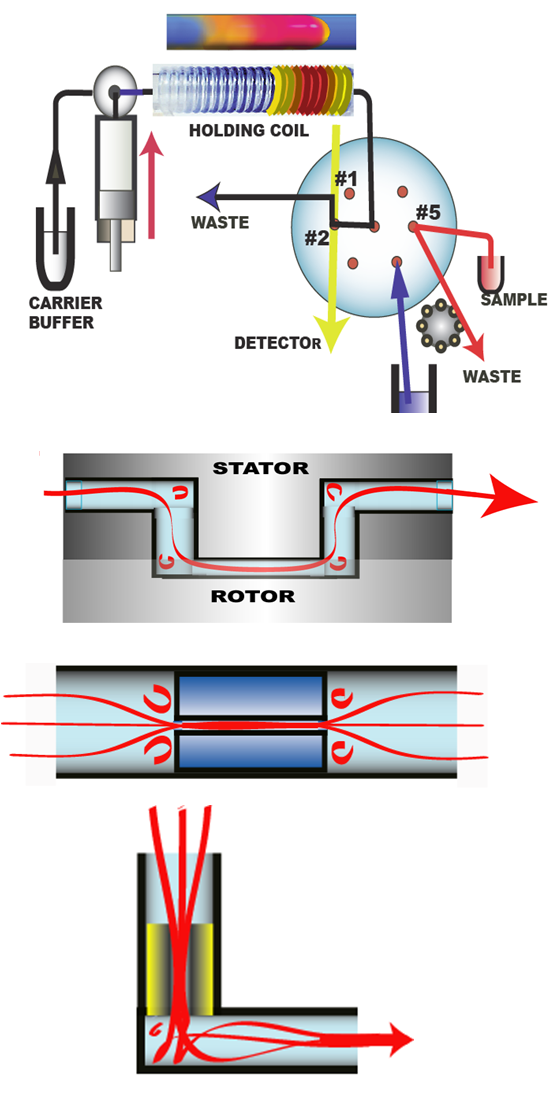Coiling, distorting or obstructing the flow path accelerates radial dispersion and improves the mixing of analyte with reagents. In addition, flow reversal and flow acceleration promote both axial and radial dispersion (Chapter 0).
In LOV format, mixing is further enhanced by designing the geometry of the flow path to be anything but straight and uniform.
A cross section of LOV reveals sharp bends and a shallow section of the rotor. Within the LOV module there are corners where vortexes and eddies form. A nozzle made of a short piece of PEEK tubing of smaller internal diameter is a simple tool for disrupting the laminar flow. The nozzle aimed at a wall is a powerful technique that promotes mixing by injecting an accelerated stream perpendicularly towards a wall (Schultz 2002).
Careful observation of the included movie clips, documents efficiency of the features of the flow channel design. Injecting a dye is a very efficient tool for optimization of the flow path, including flow cell, as it identifies dead volumes, which inevitably cause excessive tailing and possible carryover.
C.M. Schultz & J. Ruzicka Analyst, 127, 1293 (2002)
LOV Design and the Geometry of the Flow Path
2.3.4.










